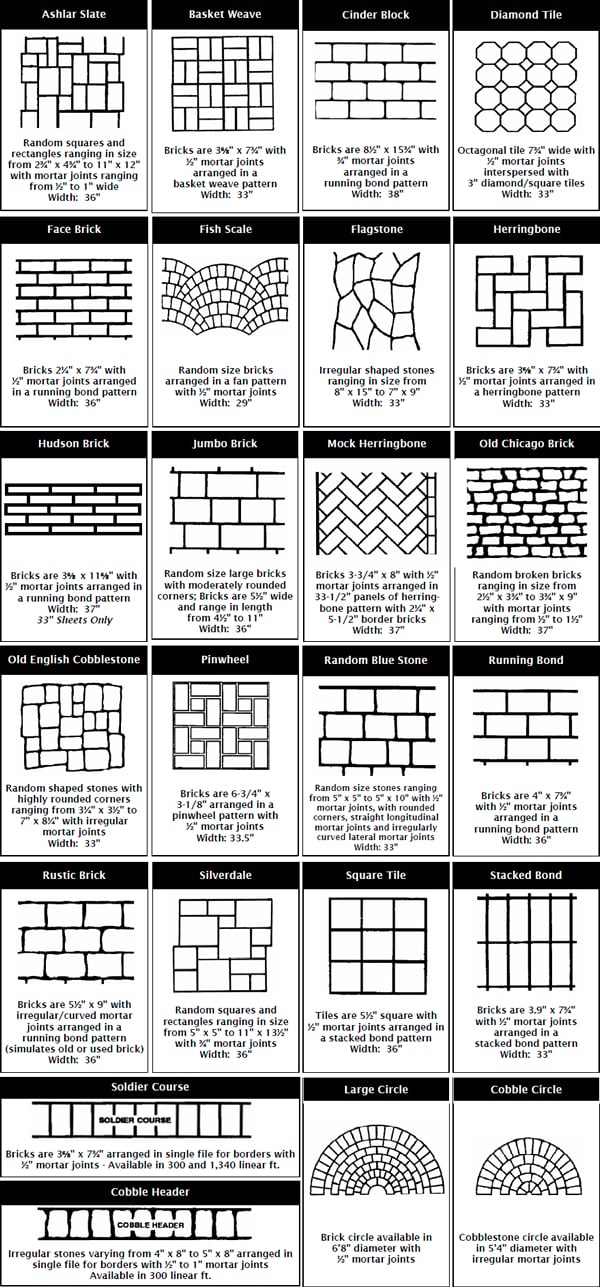- Concrete Stencils Home
- Paper or plastic The pros and cons of each
- Stock or custom concrete stencils: Which type fits your design needs?
- Adhesive or nonadhesive stencils: When to use each type
- Concrete stencil patterns: View some of the options
- How-To Tips for Using Stencils
- Step-by-step process of applying stencils
- Using microtopping and stencils to rejuvenate ugly concrete
- Related Information:
- Stenciling Concrete Floors
- "Floor Me" video series: Stencil design ideas and techniques
- Concrete logos and graphics: Creating images with concrete stencils
- Bob Harris' five favorite methods for creating graphics on floors
Concrete Stenciling Patterns
Stencils for concrete come in a variety of popular patterns ranging from running-bond brick to stone, slate and tile (see diagram). They come in rolls, like wrapping paper, with each roll measuring about 3 feet wide and 335 feet long (or roughly 1,000 square feet). The stencil is made of thick, tear-resistant paper covered with a water-resistant coating, similar to the material used to make milk cartons. The stencil pattern consists of only the "mortar joints," with the "bricks" or "stones" cut out.

These patterns are provided by Artcrete Decorative Concrete Products.
Featured Products
 Reusable Urethane Stencils
New Technology - leaves crisp clean designs
Reusable Urethane Stencils
New Technology - leaves crisp clean designs
 Decorative Stencils
Adhesive or non-adhesive, slate, brick, etc.
Decorative Stencils
Adhesive or non-adhesive, slate, brick, etc.
 Paper Stencils
Thick, tear resistant & a wide variety of patterns
Paper Stencils
Thick, tear resistant & a wide variety of patterns




